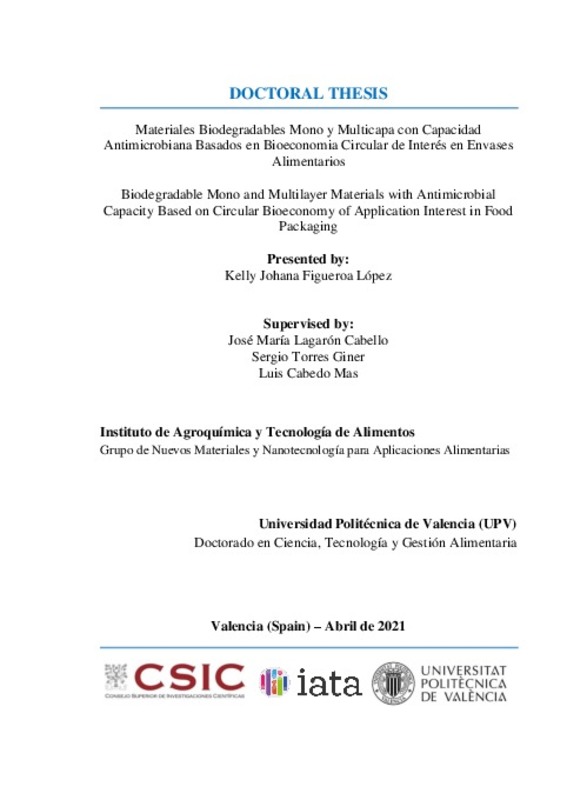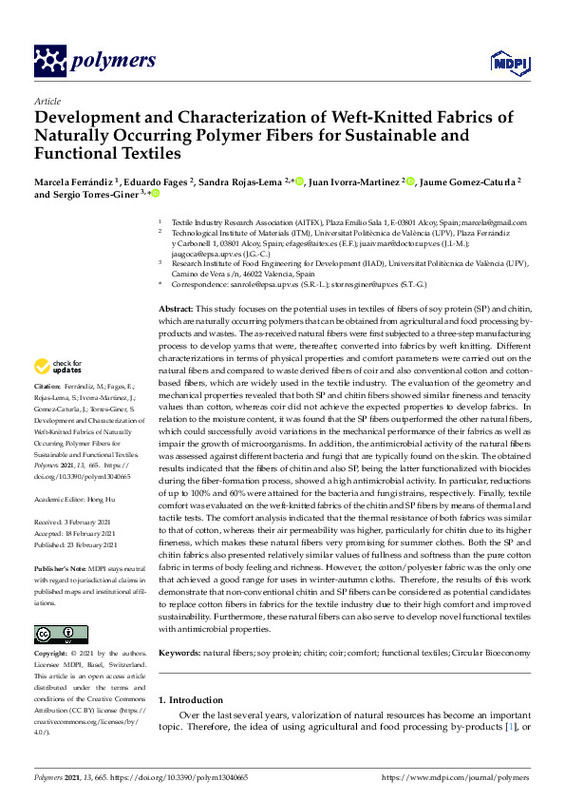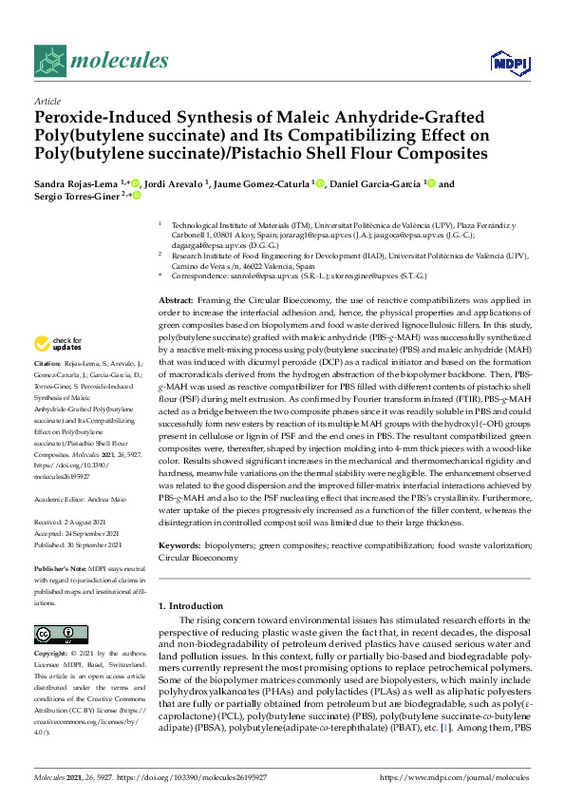

Listar por palabra clave "Circular Bioeconomy"
RiuNet: Repositorio Institucional de la Universidad Politécnica de Valencia
- RiuNet repositorio UPV
- :
- Listar por palabra clave
JavaScript is disabled for your browser. Some features of this site may not work without it.
Buscar en RiuNet
Listar
Mi cuenta
Ayuda RiuNet
Admin. UPV
Listar por palabra clave "Circular Bioeconomy"
Mostrando ítems 1-6 de 6
-
Figueroa López, Kelly Johana (Universitat Politècnica de València, 2021-06-28)[ES] El envasado activo es una de las tecnologías emergentes más relevantes de la industria alimentaria. Su objetivo es interactuar con el espacio de cabeza del envase para controlar las reacciones enzimáticas, químicas, ...
-
Melendez-Rodriguez, Beatriz; Torres-Giner, S.; Reis, Maria A. M.; Silva, Fernando; Matos, Mariana; Cabedo, Luis; Lagarón, José María (MDPI AG, 2021-04)[EN] In the present study, a new poly(3-hydroxybutyrate-co-3-hydroxyvalerate-co-3-hydroxyhexanoate) [P(3HB-co-3HV-co-3HHx)] terpolyester with approximately 68 mol% of 3-hydroxybutyrate (3HB), 17 mol% of 3-hydroxyvalerate ...
-
Ferrándiz, Marcela; Fages, Eduardo; Rojas-Lema, Sandra Paola; Ivorra-Martinez, Juan; Gomez-Caturla, Jaume; Torres-Giner, Sergio (MDPI AG, 2021-02)[EN] This study focuses on the potential uses in textiles of fibers of soy protein (SP) and chitin, which are naturally occurring polymers that can be obtained from agricultural and food processing by-products and wastes. ...
-
Rojas-Lema, Sandra Paola; Arévalo, Jordi; Gómez-Caturla, Jaume; Garcia-Garcia, Daniel; Torres-Giner, Sergio (MDPI AG, 2021-10)[EN] Framing the Circular Bioeconomy, the use of reactive compatibilizers was applied in order to increase the interfacial adhesion and, hence, the physical properties and applications of green composites based on biopolymers ...
-
Ortiz-Barajas, Diana L.; Arévalo-Prada, Johan A.; Fenollar, Octavio; Rueda-Ordóñez, Yesid J.; Torres Giner, Sergio (MDPI AG, 2020-09)[EN] Coffee husk, a major lignocellulosic waste derived from the coffee industry, was first ground into flour of fine particles of approximately 90 mu m and then torrefied at 250 degrees C to make it more thermally stable ...
-
Terroba-Delicado, Enrique; Fiori, Stefano; Gómez-Caturla, Jaume; Montanes, Nestor; Sanchez-Nacher, Lourdes; Torres-Giner, S. (MDPI AG, 2022-04)[EN] The present work puts the Circular Bioeconomy's concept into action, originally valorizing residues of spent coffee grains from the beverage liquor coffee industry to develop green composite pieces of polylactide ...
Mostrando ítems 1-6 de 6

Universitat Politècnica de València. Unidad de Documentación Científica de la Biblioteca (+34) 96 387 70 85 · RiuNet@bib.upv.es








